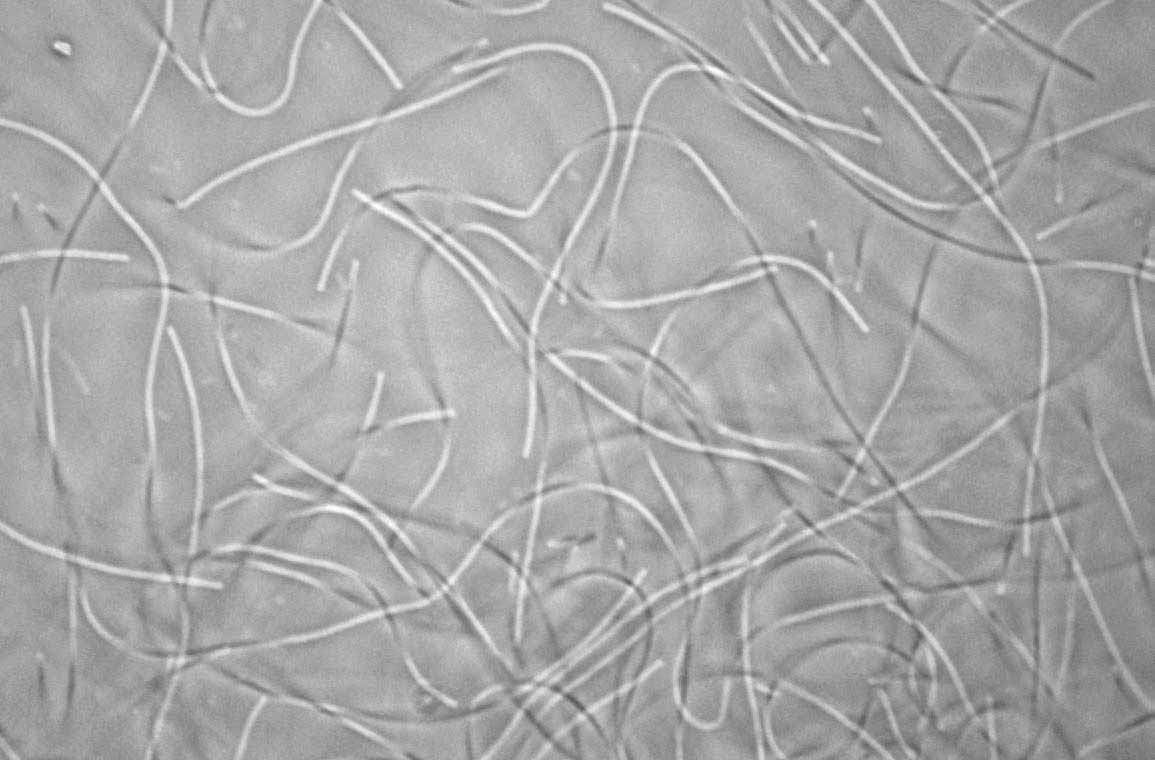The phylum Chloroflexi is a deep-branching lineage within the Domain Bacteria. The members of the Chloroflexi are apparently metabolically diverse and widely distributed in nature. Although these organisms generally stain Gram-negative, a lipopolysaccharide-containing outer membrane is not present and the peptidoglycan is a variant that usually contains L-ornithine as the diamino acid. Most members of the Chloroflexi exhibit gliding motility. The phylum is currently subdivided into two orders, “Chloroflexales,” which contains phototrophic members, and “Herpetosiphonales,” which does not contain phototrophic members. The type strain of this latter order, Herpetosiphon aurantiacus strain ATCC 23779, was described by Holt and Lewin (1) and was isolated from the slime coat of a freshwater alga of the genus Chara from Birch lake, Minnesota. Herpetosiphon spp. form unbranched filaments with a diameter of 0.5 to 1.5 µm and have cells approximately 2 to 3 µm in length. The filaments are capable of rapid gliding motility. The mol% GC content of the DNA of H. aurantiacus is 48%. H. aurantiacus is an aerobic chemoheterotroph and forms yellow-colored colonies due to the production of carotenoids. Quinn and Skerman (3) showed that H. aurantiacus is capable of predation of other bacteria and that it could destroy whole colonies of several Gram-positive and Gram-negative bacterial species, although endospores of Bacillus spp. were resistant to attack. Jurkevitch (2) has suggested that Herpetosiphon spp. are capable of facultative predation by the “wolfpack” strategy, in which a quorum of predatory organisms are required to degrade the prey organism by excreted hydrolytic enzymes. The genome should help to define the evolutionary relationship between the phototrophic and non-phototrophic members of the Chloroflexi and their joint relationship to other bacterial phyla. The genome may also help to refine our knowledge of predation strategies among bacteria. References:
|
||
|
||
Herpetosiphon aurantiacus DSM 785

